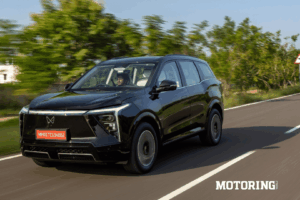There comes a time in every person’s life when they’re forced to re-think certain notions they hold, because evidence to the contrary is presented irrefutably; clinging on to the old thought simply becomes impossible. My most recent ‘holy s**t’ moment came when I pressed a large, red button marked NGB on a steering wheel – the steering wheel of the Hyundai Ioniq 5 N, to be exact. I was cruising quite sedately down a motorway outside Seoul, South Korea, when I decided to give in to temptation and thumb that button; what happened next will stay with me for a long time.
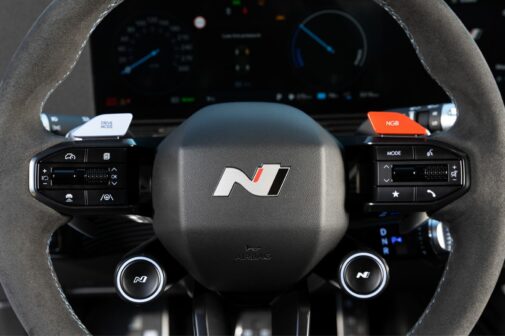
I wasn’t so much pushed back into my seat as punched almost through it, and my arms straightened so quickly that I feared elbow dislocation. The car seemed to move through some kind of portal – one second I was here, and the next I was… there. This was because 641 bhp was instantly delivered to all four wheels for a full 10 seconds, alongside 77 kgm of torque, resulting in the kind of acceleration normally reserved for supercars with great big petrol engines. The soundtrack was also thrilling – an angry wasp’s nest orchestra that caused the hair on my neck’s nape to stand to attention. That button did what it said on the cover – NG(rin)B(oost) may be a slightly silly name, but it made me the grinniest grinner that ever grinned, I’ll tell you that. The car’s software made it go into a mandatory 10-second cool-off period after the initial 10 seconds of madness, and then I was able to press the button again, for a fresh burst of hilarity.
‘Wait’ I hear you say. ‘A wasp’s nest soundtrack in an EV? You’re kidding, right?’ I most certainly am not, and nor is Hyundai. In fact, not only does that brutal noise exist – pops, crackles, burbles and all – there is also an 8-speed paddle-shift ‘gearbox’ that mimics a real one, again via software. As you accelerate and use the shifters, you can feel the build-up towards the (artificial) 8000 rpm redline with each ‘shift’, and if you don’t shift –well, it bounces off the limiter. Conceptually, this is all a bit of a cheat, but in real life, it’s absolutely brilliant, and makes you forget that you’re behind the wheel of an EV. You can choose between three soundtracks, including one that sounds like a fighter jet, but the IC sportscar one is by far the best. All this can be turned off if you want to silently waft along like a real EV, but that experience suddenly becomes so boring that you’ll likely switch it back on pretty quickly.
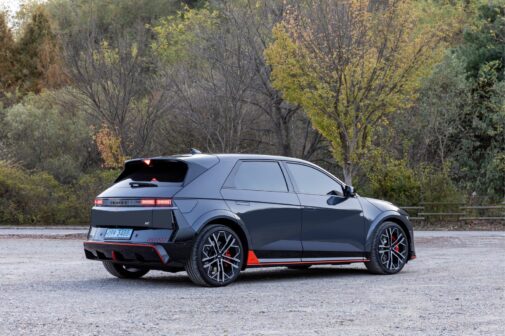
The electronic whizbangery doesn’t end there, not by a long shot. Hyundai and its N (for Namyang) division have gone the whole hog with the Ioniq. There’s launch control and a 0-100 kph time of 3.4 seconds, which would do some Ferraris proud. Granted, brutal acceleration isn’t new in the hi-po EV world, but it’s the way the Ioniq 5 N *feels* while making its getaway that is so special; it connects with you in a very fundamental way. Given enough road, the car will hit a sizzling 267 kph top speed, too.
If you’re looking to emulate the late, great Ken Block, this car has you covered in a couple of ways. There’s the N Drift Optimiser, which directs all the torque to the rear axle and keeps the nannies to a minimum, so that you can get the car to dance; you can also switch to 100 per cent front-driven mode. A variation on that theme is the torque kick drift, which you can employ judiciously (or not) in corners; you have to pull on both paddles on throttle, at which point power is cut off, and then as soon as you release them, all that power is blasted to the rear wheels for some sideways action. Mind you, I didn’t get anywhere close to attempting either of these modes, given that I was driving on public roads in South Korea, some of which were close to the North Korean border; the last thing I wanted was old half-pint across the border getting excited and initiating a diplomatic incident.
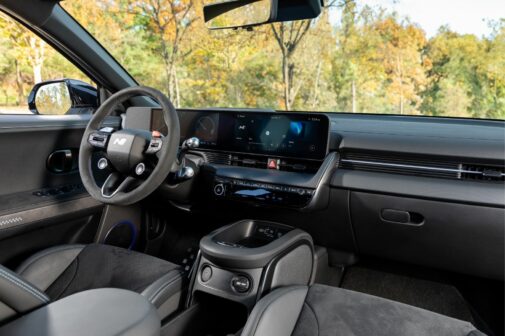
Normally, all those electronics working away furiously in the background would eventually become intrusive – but in this car, they don’t, because they *are* the car. As a purist, you may sneer at this, but as a bit of a purist myself, I see no shame in admitting that the experience is utterly addictive; like I said, a new dimension has been opened about what can be done with an EV. Despite weighing over two tonnes, the Ioniq 5 N feels nimble, and even though the steering is a little on the light side, the control it gives you over the car is exceptional – point and shoot, amigo.
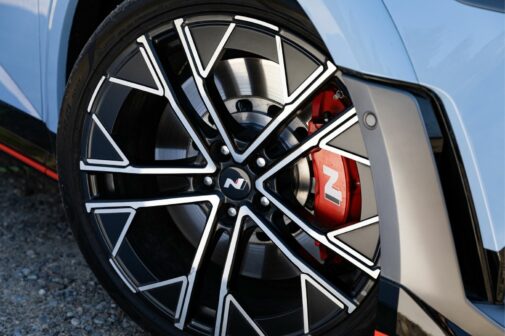
There’s a brilliant sense of fluency and weight transfer around corners, and in a straight line it’s sensationally good. The 275-section Pirelli tyres provide huge amounts of grip (use this car the way it’s meant to be used and you’ll be changing those pretty often), and the all-round performance disc brakes – 400mm front, 360mm rear – are razor sharp; there’s regenerative braking thrown in as well, of course.
Why, though? Why take an excellent EV and try and hit it with a internal combustion engine stick? Hyundai says it just wanted to make a fun, proper driver’s car, and it used the Porsche Taycan and the Tesla Model 3 as benchmarks; it also used its own N cars, which made all the difference. All the analogue bits were thoroughly worked on – steering, chassis, suspension, brakes et al – and the powertrain was massaged, too. The new higher-powered electric motors send power to all four wheels through rally-style axles, the cooling system is much more robust, an LSD has been thrown into the fray and of course there’s all the electronic wizardry. The cabin is much sportier, with racing seats and harnesses, and alcantara all over the place, but it’s still quite comfortable and roomy. Visually, there are some fresh design elements on the front and rear bumpers and the heels, and that funky racing blue shade of paint.

The end result is an EV in which you can set everything to ‘civilised’, pack the family and some luggage inside and go on a very quiet road trip. When you (or the kids) get a bit bored, a flick of a switch is all it takes to transform the N into a (fake) fire-breathing monster, burbles and overrun gunshots and all. As a matter of fact, this car can do two full-blast laps of the Nurburgring before battery degradation becomes a factor – what’s not to like?
This is a genuinely fast and capable performance car, and it offers a vision of what the future could – and should – look like. A lot of it is artificial, as I’ve mentioned, but it’s also extremely real and certainly not a gimmick; the people who have worked on this car deserve high praise for the amount of ‘feel’ that they have instilled in it. Will we ever see it in India? Ask Hyundai and it will answer with lots of marketing-speak, but I can guarantee that if it’s brought here, there will be takers for it no matter what it’s priced at. Come on Hyundai, you know what to do.
Photos shot by Hyundai













